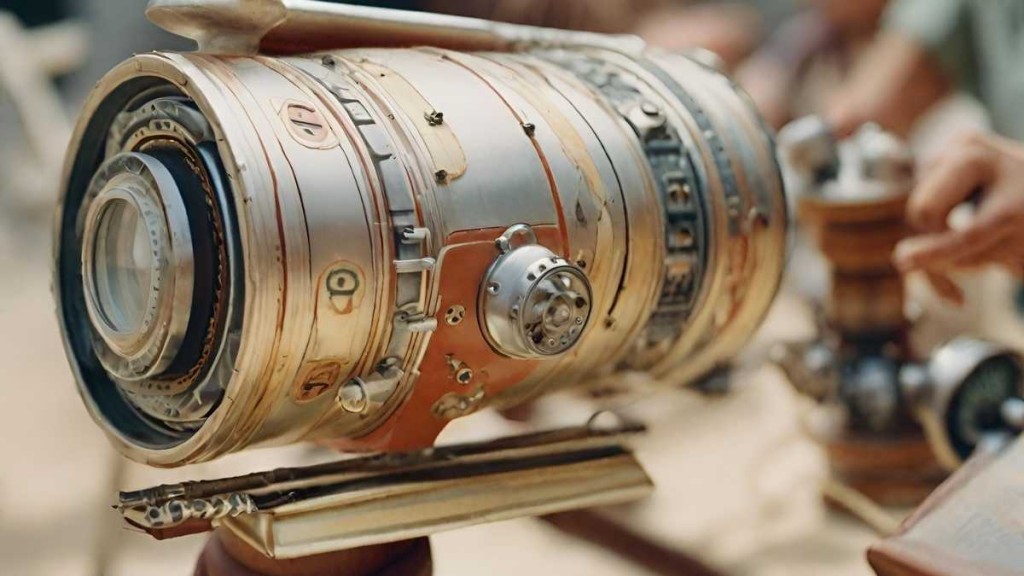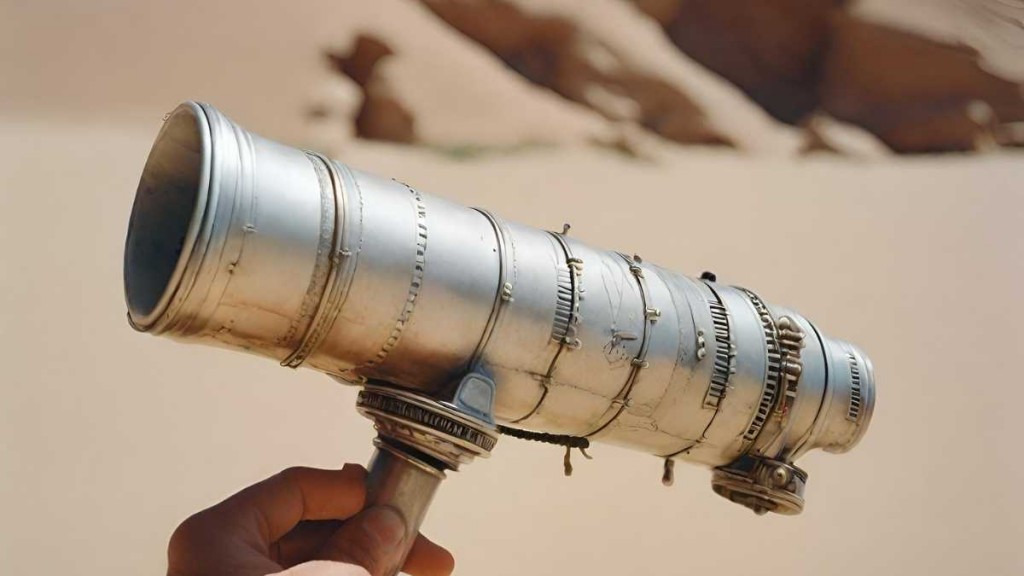The Age of Exploration flourished due to advances in navigation and shipbuilding. Astrolabes, compasses, and caravel ships were vital for open-sea voyages.
Embarking on a journey that defined history, the Age of Exploration emerged from the 15th to the 17th century, reshaping global interaction. Breakthroughs in technology allowed explorers to navigate the vast oceans with more confidence and precision. Nautical instruments like the astrolabe allowed sailors to determine latitude, while the magnetic compass provided direction.
Equally transformative were innovations in ship design, notably the caravel, with its robust structure and improved sail arrangement. These ships could tackle the fierce winds of the Atlantic and carry explorers to new worlds. Optimizing trade routes, establishing colonies, and exchanging cultures stemmed from this adventurous era, precipitated by the technological leaps in maritime exploration. These advances ignited an unprecedented exchange of goods, ideas, and people, setting the stage for the modern interconnected world.

Credit: www.informationtechnolover.com
Introduction
The Age of Exploration was catalyzed by innovations such as the astrolabe, which enabled precise navigation, and the caravel, a ship designed for long voyages. These technological breakthroughs revolutionized global exploration, mapping uncharted territories and connecting distant cultures.
In the tapestry of human achievement, the Age of Exploration stands out as a remarkable era where oceans were crossed, continents were discovered, and the world was forever mapped in a new image. At the heart of these daring voyages were technological advancements that spurred sailors and explorers to venture beyond the horizon with greater confidence than ever before.
The Navigational Compass: A Beacon Of Direction
The guiding star of this transformative epoch was undoubtedly the navigational compass. This simple yet profound invention:
- Oriented mariners at sea: The compass provided a reliable sense of direction, which was invaluable on overcast days or starless nights when celestial navigation was impossible.
- Enabled longer voyages: With a clear course, ships could travel further, reaching previously inaccessible destinations.
Astrolabe And Cross-staff: Measuring The Heavens
Equally significant in the explorer’s toolkit were devices enabling celestial measurements.
- The astrolabe: This intricate instrument allowed navigators to ascertain the altitude of the sun or a star above the horizon, which was crucial for determining latitude.
- The cross-staff: A simpler tool serving a similar purpose, enabling sailors to measure the angle between celestial bodies and the horizon.
Caravels: Innovations In Shipbuilding
Ship design saw revolutionary changes during the Age of Exploration.
- Sleek hulls and triangular sails: Caravels were built with these features, facilitating swifter and more agile movement, especially useful for tacking against the wind.
- Increased capacity for cargo and crew: This allowed expeditions to carry more supplies and personnel, thus extending the scope of exploration.
The Printing Press: Disseminating Knowledge
No advance in technology could compare to the impact of the printing press on the spread of knowledge.
- Mass production of maps and texts: This led to the widespread distribution of navigational charts and explorers’ accounts, which in turn inspired further exploration and innovation.
Embarking on a journey through the high seas, these pioneering technologies set the course to new worlds. The profound impact of each technological stride cannot be overstated, for it is these innovations that hoisted the sails of progress and wrote history’s most adventurous chapters.
Key Technological Innovations

Navigational advancements such as the magnetic compass and astrolabe charted the course for exploration. Coupled with the innovation of sturdier ships like the caravel, these technologies spurred the great Age of Exploration.
The Age of Exploration stands as a testament to humankind’s unquenchable thirst for discovery and innovation. Remarkable technological advancements during this era ushered in new chapters of navigation and geographical understanding, fundamentally altering our view of the world. Let’s delve into the key technological innovations that acted as the cornerstone of this transformative period.
The Astrolabe
Originally developed by Greek astronomers, and later perfected by Arabic scientists, the astrolabe was pivotal for celestial navigation:
- Precision in the stars: This device enabled explorers to determine their latitude by measuring the angle of celestial bodies above the horizon.
- Versatile use: Beyond navigation, astrolabes served as portable astronomical observatories, aiding in the identification of stars and planets for maritime voyagers.
The astrolabe’s ability to unlock the mysteries of the night sky with remarkable precision emboldened mariners to sail beyond the sight of land, confident in their celestial guide.
Caravel Ships
A significant leap in shipbuilding came with the design of the caravel, whose features boosted maritime exploration:
- Agile and sturdy: These ships were notably faster and nimbler than their predecessors, capable of withstanding the rigors of ocean voyages while requiring a smaller crew.
- Innovative rigging: Equipped with triangular sails—the lateen sails—caravels could sail closer to the wind, a breakthrough in navigation efficiency.
Caravel ships, with their revolutionary design, played an instrumental role in enabling explorers to brave the vast and stormy Atlantic, opening routes to new worlds.
Magnetic Compass
The introduction of the magnetic compass was nothing short of a navigational revolution:
- Orienting explorers: Sailors could now reliably determine their heading even during overcast conditions or on starless nights.
- Reducing uncertainties: The use of compasses diminished the reliance on dead reckoning—estimating one’s position—which significantly cut down the errors in navigation.
By indicating a true north, the magnetic compass provided a constant point of reference, fostering the confidence needed for transoceanic voyages.
Cartography Advances
The era experienced a surge in the art and science of mapmaking:
- Detailed charting: The creation of intricate maps and nautical charts depicted coastlines, harbors, and ocean currents with greater accuracy.
- Standardizing navigation: Portolan charts, which included compass roses and rhumb lines, standardized navigation practices among seafarers.
These advancements in cartography enabled explorers to visualize their journeys and record new discoveries, effectively consolidating collective navigational knowledge.
Each of these technological marvels contributed to the success of the Age of Exploration, opening up our planet as never before. They served as the tools that navigators and explorers relied on to extend the boundaries of the known world, weaving the rich tapestry of global connectivity that we benefit from today.
Explorers And Their Achievements

Navigational tools like the compass and astrolabe revolutionized the Age of Exploration, guiding explorers to new worlds. Groundbreaking ship designs and accurate cartography enabled adventurers to traverse vast oceans with greater confidence and precision.
The Dawn Of A New Era In Navigation
The Age of Exploration was intrinsically linked to the sweeping technological innovations that propelled explorers to traverse uncharted territories. Amidst the litany of these advancements, the creation of the astrolabe stands out. This ancient analog computer was indispensable for navigation, allowing sailors to determine latitude by measuring the angle of the sun or a star above the horizon.
Coupled with the development of the magnetic compass, which offered a steady reference point irrespective of weather conditions, these tools were the celestial compasses that guided intrepid mariners across the vast oceans.
Pioneers Of The Sea: Key Figures
- Christopher Columbus: Whose 1492 voyage, under the aegis of the Spanish crown, irrevocably connected the continents and introduced European colonialism to the New World.
- Vasco da Gama: Known for charting a direct sea route from Europe to India around the Cape of Good Hope in 1498, thus forging new economic and cultural ties.
- Ferdinand Magellan: Remembered for his audacious circumnavigation of Earth, an expedition that laid bare the true vastness of the planet albeit he did not survive the journey.
These explorers, driven by a desire for knowledge and wealth, expanded our understanding of the globe, facilitated cultural exchanges, and paved the way for future explorations and trade routes that would change the world forever.
Shipbuilding: Crafting Vessels For Discovery
The caravel, a small, highly maneuverable sailing ship used notably by the Portuguese, was central to the Age of Exploration. Its design was a game-changer:
- Speed: Caravels were faster than their predecessors, making them ideal for exploring unknown waters.
- Agility: Their ability to sail against the wind was a breakthrough in nautical technology.
- Size: Their compact size allowed for deeper exploration into uncharted rivers and closer to shorelines.
These ships were the physical embodiment of advancement, touched by the hand of innovation, and were absolutely crucial to carrying explorers to new lands with their durable frames and billowing sails.
Navigation Instruments: Aiding The Age Of Sail
Advanced instruments were to explore what passwords are in the digital age – essentials for access. The quadrant and the cross-staff, joining the astrolabe and compass, were critical developments, allowing for precise celestial navigation:
- Quadrant: Utilized for determining the altitude of celestial bodies.
- Cross-staff: An earlier, simpler form of the backstaff, used for measuring angles to the sun or North Star.
Employing these, navigators could traverse the vastness of the seas with a newfound accuracy, making each expedition a leap into the future of exploration, rather than a blind stab in the watery abyss.
Cartography: Mapping The World
Imagine the worlds that unfurled beneath the cartographer’s pen. Maps from the Age of Exploration were not mere representations; they were a canvas of potential:
- Portolan Charts: Among the earliest nautical maps, showcasing coastlines with remarkable precision.
- The Cantino Planisphere: One of the first world maps to depict the Americas post-Columbus, enhancing trade route planning.
It can be said that cartography was the silent herald of the Age of Exploration, laying the groundwork that would turn seafaring lore into solidified knowledge. With each voyage, the canvas of the known world expanded, and so did the horizons of human ambition.
The Age of Exploration is a vivid tapestry woven with threads of ingenuity and courage. It’s a story of how technological prowess can redefine the boundaries of human potential and the very conception of our world. Each invention, each explorer, each map served as a stepping stone to an era that still echoes through time, a testament to the indomitable spirit of discovery that continues to inspire generations.
Frequently Asked Questions Of What Technological Advances Made Possible The Age Of Exploration
What Technological advances made Possible The Age Of Exploration?
The Age of Exploration was enabled by innovations in navigation, like the magnetic compass, and advancements in shipbuilding technology, including the caravel.
What Made The Age Of Exploration Possible?
The Age of Exploration was made possible by advances in navigation technology, increased funding from monarchs, and a desire for new trade routes. European curiosity and the search for resources like gold and spices also contributed significantly.
Which Technological Improvements Led To The Era Of European Exploration?
Advancements in navigation, such as the magnetic compass and astrolabe, along with innovations in shipbuilding like the caravel, spurred European exploration. Improved cartography and the printing press also played crucial roles.
What Are Two Inventions That Represent Technological Advances During The Age Of Exploration?
Two notable inventions from the Age of Exploration are the magnetic compass and the astrolabe. These tools improved navigation and sea travel.
Conclusion
The Age of Exploration was a pivotal era, propelled by innovations in navigation, shipbuilding, and cartography. Advances like the astrolabe and caravel opened new horizons, profoundly shaping our global history. Let’s celebrate the ingenuity and courage that fueled these voyages, forever altering humanity’s course.



